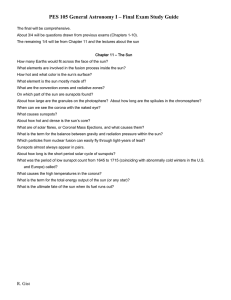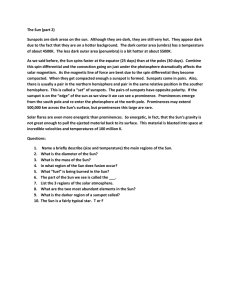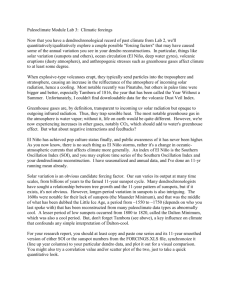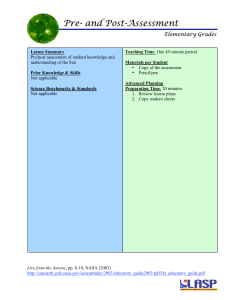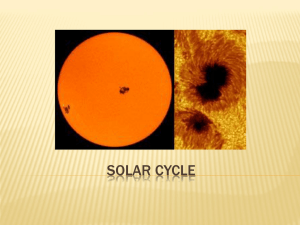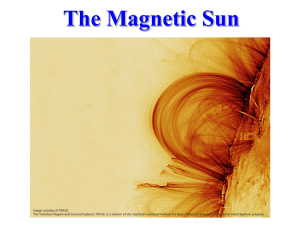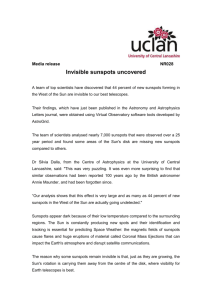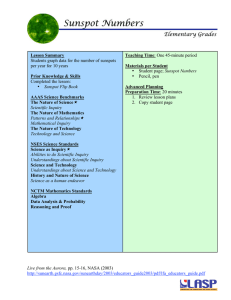Lesson Summary Teaching Time Materials per Team Prior Knowledge & Skills
advertisement
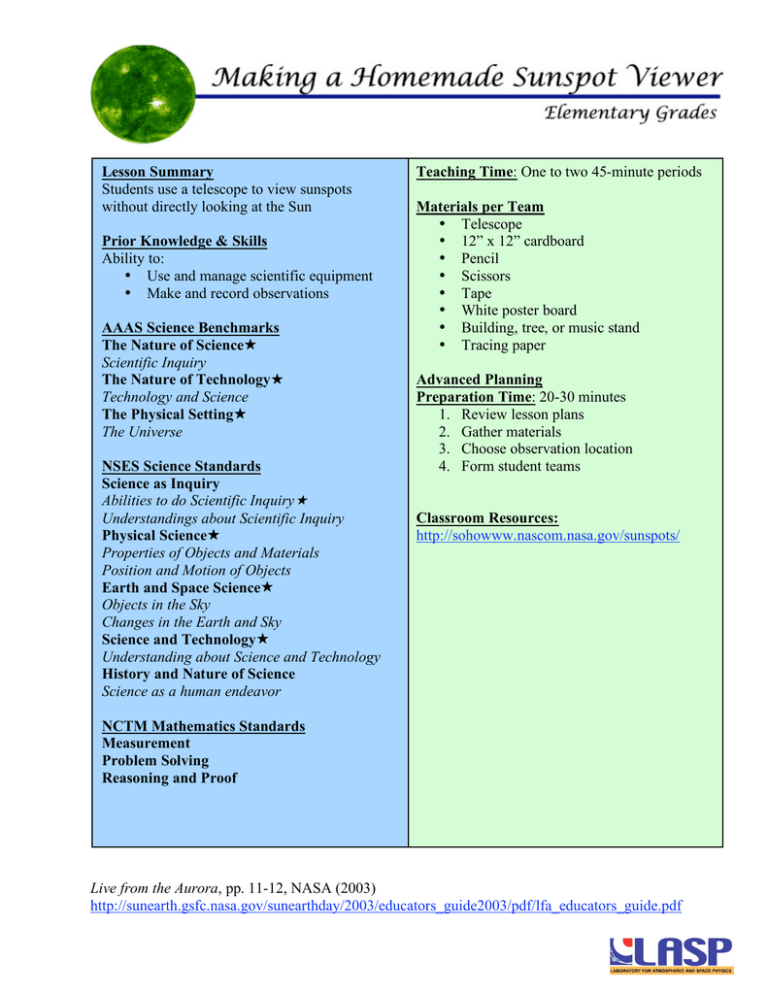
Lesson Summary Students use a telescope to view sunspots without directly looking at the Sun Prior Knowledge & Skills Ability to: • Use and manage scientific equipment • Make and record observations AAAS Science Benchmarks The Nature of Science Scientific Inquiry The Nature of Technology Technology and Science The Physical Setting The Universe NSES Science Standards Science as Inquiry Abilities to do Scientific Inquiry Understandings about Scientific Inquiry Physical Science Properties of Objects and Materials Position and Motion of Objects Earth and Space Science Objects in the Sky Changes in the Earth and Sky Science and Technology Understanding about Science and Technology History and Nature of Science Science as a human endeavor Teaching Time: One to two 45-minute periods Materials per Team • Telescope • 12” x 12” cardboard • Pencil • Scissors • Tape • White poster board • Building, tree, or music stand • Tracing paper Advanced Planning Preparation Time: 20-30 minutes 1. Review lesson plans 2. Gather materials 3. Choose observation location 4. Form student teams Classroom Resources: http://sohowww.nascom.nasa.gov/sunspots/ NCTM Mathematics Standards Measurement Problem Solving Reasoning and Proof Live from the Aurora, pp. 11-12, NASA (2003) http://sunearth.gsfc.nasa.gov/sunearthday/2003/educators_guide2003/pdf/lfa_educators_guide.pdf Name MAKING A HOMEMADE SUNSPOT VIEWER MATERIALS NEEDED: Telescope12-inch square piece of cardboard Pencil/scissors/tape White poster board Building, tree, or adjustable music stand Tracing paper WARNING!!! It is never safe to look directly at the Sun because the Sun’s rays can damage your eyes. It is safe to study the Sun’s surface if you use a telescope to project the Sun’s image onto a piece of paper. PROCEDURE: 1. Set up a telescope as if you were looking at the Sun. 2. Cut a small hole in the center of the 12-inch square piece of cardboard. 3. Tape the cardboard with the hole in the center onto the large lens of the telescope. This cardboard serves 2 purposes. First, the outline of the cardboard will cast a shadow onto the second piece of paper which will make it easier to see the Sun’s image. Second, the hole in the center will focus the image of the Sun on the second piece of paper. 4. Tack a piece of white poster board to a building or tree. If none are available, use an adjustable music stand. Focus the image of the Sun onto the piece of white poster board. 5. If the distance and focus are correct, on the poster board you should see a circle of light (the Sun’s image) that is brighter at the center and darker around the edges. Inside the circle you should see some small dark spots which are sunspots. Trace the Sun and any sunspots that you see on the tracing paper. 6. Trace the Sun and it’s sunspots every day for 10 days if possible, weather permitting. Be sure to date each paper. Try to trace the Sun at the same time each day. Label your dots A, B, C, etc., to show their movement. RESULTS: When the distance and focus are correct, you should expect to see a circle of light (the Sun), which is brightest at the center and darker around the edges. Inside the circle, generally toward the middle of the Sun, you will see small black dots; these are sunspots! •••SUNSPOTS Name SUNSPOT VIEWER REVIEW Your class made many drawings of the Sun and the sunspots using the telescope. Lay your drawings on the floor or on a table. Arrange them in the same order they were made. Answer the following questions about your observations. 1. Does the Sun appear to change shape? What shape is it? 2. Do the sunspots appear to be moving? 3. Which direction are the sunspots moving–horizontal (across) or vertical (up and down)? 4. If the sunspots continue to follow the same pattern, draw what you think the next Sun and sunspots would look like. 5. Are all the sunspots the same shape? The same size?
